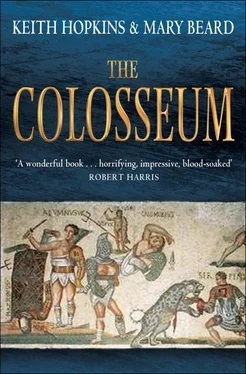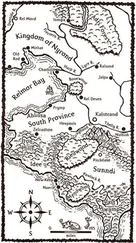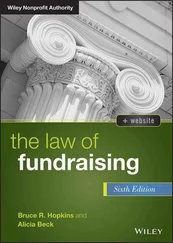Keith Hopkins - The Colosseum
Здесь есть возможность читать онлайн «Keith Hopkins - The Colosseum» весь текст электронной книги совершенно бесплатно (целиком полную версию без сокращений). В некоторых случаях можно слушать аудио, скачать через торрент в формате fb2 и присутствует краткое содержание. Город: London, Год выпуска: 2011, ISBN: 2011, Издательство: Profile Books, Жанр: История, на английском языке. Описание произведения, (предисловие) а так же отзывы посетителей доступны на портале библиотеки ЛибКат.
- Название:The Colosseum
- Автор:
- Издательство:Profile Books
- Жанр:
- Год:2011
- Город:London
- ISBN:9781846684708
- Рейтинг книги:3 / 5. Голосов: 1
-
Избранное:Добавить в избранное
- Отзывы:
-
Ваша оценка:
- 60
- 1
- 2
- 3
- 4
- 5
The Colosseum: краткое содержание, описание и аннотация
Предлагаем к чтению аннотацию, описание, краткое содержание или предисловие (зависит от того, что написал сам автор книги «The Colosseum»). Если вы не нашли необходимую информацию о книге — напишите в комментариях, мы постараемся отыскать её.
The Colosseum — читать онлайн бесплатно полную книгу (весь текст) целиком
Ниже представлен текст книги, разбитый по страницам. Система сохранения места последней прочитанной страницы, позволяет с удобством читать онлайн бесплатно книгу «The Colosseum», без необходимости каждый раз заново искать на чём Вы остановились. Поставьте закладку, и сможете в любой момент перейти на страницу, на которой закончили чтение.
Интервал:
Закладка:
Many of the other elements of the standard reconstruction of arena shows – whether in film, fiction, popular guidebooks or specialist accounts – are only slightly less tenuous. It is certainly the case, for example, that we have plenty of evidence for different types of gladiator, indicated by an array of carefully distinguished titles. Tombstones of fighters often specify this precisely. A wonderfully elaborate memorial from Rome commemorates a ‘Thracian’ from Alexandria, who came to Rome to take part in the shows in honour of the emperor Trajan’s victories in AD 117; he did not live to go home (illustration 10). Another commemorates a gladiator who came from Florence, who died after thirteen fights at the age of twenty-two leaving a wife and two children (and blunt advice to anyone reading his tombstone ‘to kill whoever you defeat’); he is said to have been a ‘ secutor ’ (‘Pursuer’). Meanwhile in poignant graffiti scratched on a wall at Herculaneum, a town that was to be buried under volcanic debris just as the building of the Colosseum in Rome was reaching completion, a gladiator vows his shield to the goddess Venus if he wins: his name is Mansuetus (a presumably ironic stage-name meaning ‘Gentle’); he describes himself as a ‘ provocator ’ (‘Challenger’). It is clear enough too that these different types attracted their own groups of fans. The emperor Titus was, according to Suetonius, a self-confessed supporter of the Thracians and enjoyed arguing their merit with the crowd, just like any fan – ‘though without losing his dignity or sense of justice’, Suetonius assures us. Not so his younger brother Domitian, who was a follower of the murmillones . On one occasion, a man in the audience was heard to hint that it was impossible for a Thracian to win while the emperor was using his influence to secure a victory for the ‘fish-heads’. In one of those mini dramas that must (in the telling, at least) have increased the excitement of the show, Domitian had him yanked out of the crowd and thrown to the dogs in the arena with an explanatory placard around his neck: parmularius impie . No translation can match the Latin’s brevity: ‘a Thracian fan, but sacrilegious’.
The trouble comes when we try to match up these different titles with the visual images of gladiators and gladiatorial fights in sculpture, graffiti, paintings and mosaics from places as far afield as Germany and Libya. For in the absence of any surviving ancient accounts which explain the typology, this is the only way that historians have hoped to work out the details of the different styles of costume and different fighting methods adopted by the various brands of combatant. Some distinct categories do emerge. There are clearly contrasting types of helmet. One, for example, seems entirely to cover the face apart from two tiny eye-holes. This is generally thought to belong to the secutor (title page). Others have a broad brim, and were probably worn by Thracians and murmillones (illustration 8, p. 57) – though the general absence of fish emblems makes some historians think that it was the overall ‘fishy’ shape that gave the murmillo his title. But most of the evidence resists easy categorisation. So, for example, despite their name, ‘Net-men’ are commonly shown with their tridents, but only very rarely shown carrying nets. Is this because ancient artists found nets a tricky subject to represent? Or because, however these fighters originated, by the first century AD ( pace Gérôme) they no longer in practice used this particular piece of equipment very often? For other categories, it proves very difficult to see exactly what the difference between them might consist in. Was the Thracian the same as a ‘ hoplomachus ’ (‘shield-fighter’)? Or was there, as some archaeologists try to argue, a crucial variation in the shape of his shield? Were ‘Samnites’ just an earlier form of the murmillones ? And what of those categories that are mentioned in literature or on tombstones, but never seem to be represented in images? Why can we find no images of the ‘ essedarii ’ (‘chariot-fighters’), so often referred to in written sources?
A telling case is one of the most startling and now most frequently reproduced images of any fighter in the arena: a unique bronze tintinnabulum (bell chimes) from Herculaneum, cast in the form of a gladiator attacking his own elongated penis which is half-transformed into a panther or wolf. Leaving aside the difficult questions of where this nightmarish creature might have been displayed, by whom and why – it is a favourite object among modern historians, who want to illustrate the complex identity of the gladiator, and especially the dangerous ambivalence of his sexuality, a subject we shall return to in Chapter 4. In killing the animal, this fighter will castrate himself. ‘There is no more apt icon for the Roman cosmology of desire, and the place of the gladiator within it,’ as one writer has recently put it. But is he a gladiator at all, in the strict sense of the word? His headdress certainly bears little resemblance to that in other images of gladiators. Maybe we should better see him as one of the beast hunters in the arena, a much less common subject of ancient art or literature. Or maybe – and this would fit with his strangely dwarfish physique – he is meant to be a theatrical or mime artist. For all his fame in modern accounts of gladiatorial combat, he is a classic illustration of just how hard it is to pin images of gladiators down.
The fact is that modern accounts which list and illustrate the different gladiatorial types plus their characteristic weapons, and define their particular roles in the arena (‘the usual tactics of the secutor were to try closing in on his adversary’s body with his shield held in front of him’, and such like), are at best over-zealous attempts to impose order on the wide diversity of evidence that survives. Different types of gladiators with different names there certainly were – but how exactly each one was equipped, what particular role they took in the fighting and how that differed over the centuries of gladiatorial display throughout the whole expanse of the Roman empire is very hard indeed to judge.

The question becomes even more tantalizing when we try to fit into the picture the authentic items of gladiatorial armour that still survive – splendid helmets, shields, protections for shoulders and legs (or perhaps arms: to be honest, it is not always clear exactly which part of the body the makers had in mind). There is a considerable quantity of this, most of it, about 80 per cent, from the gladiatorial barracks at Pompeii, excavated in the eighteenth century. At first sight, even if it is not from the Colosseum itself, this material provides precious direct evidence of what an ancient combatant in that arena would have worn, only a few years before the monument’s inauguration. And it matches up reasonably well with some of the surviving ancient images of gladiators. Yet it is far too good to be true… quite literally. Most of the helmets are lavishly decorated, embossed with figures of barbarians paying homage to the goddess ‘Roma’ (the personification of the city), of the mythical strongman Hercules and with a variety of other more or obviously appropriate scenes. It perhaps fits well with Martial’s emphasis on the arena’s sophisticated play with stories from classical mythology that one of these helmets (illustration 12) is decorated with figures of the Muses. It is also extremely heavy. The average weight of the helmets is about 4 kilos, which is about twice that of a standard Roman soldier’s helmet; the heaviest weighs in at almost 7 kilos. Add to this the fact that none of them seem to show any sign of wear and tear – no nasty bash where a sword or a trident came down fiercely, no dent where the shield rolled off and hit the ground. It is hard to resist the suspicion that these magnificent objects were not actually gladiatorial equipment in regular use.
Читать дальшеИнтервал:
Закладка:
Похожие книги на «The Colosseum»
Представляем Вашему вниманию похожие книги на «The Colosseum» списком для выбора. Мы отобрали схожую по названию и смыслу литературу в надежде предоставить читателям больше вариантов отыскать новые, интересные, ещё непрочитанные произведения.
Обсуждение, отзывы о книге «The Colosseum» и просто собственные мнения читателей. Оставьте ваши комментарии, напишите, что Вы думаете о произведении, его смысле или главных героях. Укажите что конкретно понравилось, а что нет, и почему Вы так считаете.












